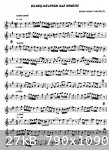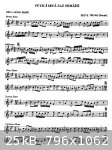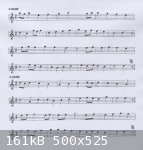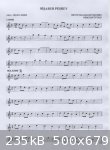Jono Oud N.Z
Oud Junkie
    
Posts: 1119
Registered: 12-14-2009
Member Is Offline
|
|
Rare and compound Maqamat / Makamlar
Currently I am researching the history and theory of the Ottoman art music in Turkey and the Ottoman Empire at the University of Canterbury (New
Zealand), and have a group that plays this music.
I am particularly interested in old / extinct maqamat / makamlar and compound maqmat / makamlar.
Some examples include: Nisabur, Nuhuft, Sultani Irak and Sunbule.
I am constantly trying to decipher new maqamat / makamlar from the enormous Ottoman repertiore.
Could someone please help me with these questions?
One question for example is:
Is makam Peyk-i Sefa a compound of Saba Zemezeme and Nihavent / Nahawand?
And is makam Dilkeshaveran an blend of Huseyni and Irak?
I really appreciate the help.
Like is said there is no-one I can talk to here.


|
|
|
amtaha
Oud Junkie
    
Posts: 342
Registered: 1-30-2006
Location: Canada
Member Is Offline
Mood: beginner's frustration ...
|
|
Where's Al-Halabi when you need him. :-)
|
|
|
adamgood
Oud Junkie
    
Posts: 499
Registered: 6-27-2005
Location: Brooklyn, NY
Member Is Offline
Mood: 2.7 koma flat
|
|
Quote: Originally posted by Jono Oud N.Z  |
Is makam Peyk-i Sefa a compound of Saba Zemezeme and Nihavent / Nahawand?
And is makam Dilkeshaveran an blend of Huseyni and Irak?
|
makam Peyk-i Sefa...I don't know this makam so I had a look and yes it looks like a combination of saba and nihavend. If you figured that out yourself
then bravo, you are for sure on the right track and can realize that it's not exactly rocket science. So the question is, how did it get there? For
compound makams there's usually (always?) a switch or a bridge, however you want to call it. Swap one taste for another related taste.
For this makam the segah pitch (B 1koma flat) makes a switch to Kurdi (B 5 koma flat). This is so common...imagine the mileage you can get out of
switching these for modulations: Ussak to Kurdi, Rast to Nihavend or Nikriz.
Ussak to Kurdi switch is or can be used in makams AcemAsiran, Ferahfeza, Dilkeside, AcemKurdi, Dugah, and probably way too many more.
Nuri Karademirli (ud master who lives here in Berlin, DE) told me an interesting thing: any time you have a "major" sounding taste for example rast or
"cargah" (the new one which can be found in makams Mahur or Acem), nikriz taste is right around the corner. That's a useful switch....for that look at
makam Zavil (mahur sounding but uses more nikriz) or AcemAsiran (uses major sound) vs. Sevkefza (uses related nikriz sound). Cool stuff.
BTW you had mentioned nisabur. There is hardly any repertoire but it's a very important and strong taste that finds its way into some makams. Tonic is
B natural, it uses C#. Check out Hicaz Humayun (pesrev from Veli Dede, right before the teslim it uses this nisabur taste). Makam Isfahan also uses
it.
I haven't played much Dilkeshaveran but basically yep, it's starts like huseyni and ends like Irak. So probably it makes the break around what would
be the ussak part of Irak. Check out makam Dilkeshide, it starts like Huseyni, uses an ussak to kurdi switch and continues on and ends like
ferahfeza.
Adam
|
|
|
Jono Oud N.Z
Oud Junkie
    
Posts: 1119
Registered: 12-14-2009
Member Is Offline
|
|
Thanks!
It is very helpful to be able to talk to people about these questions!
I noticed in makam Peyk-i Sefa that there may be a third sound at the break (good way of describing it) : Saba melds into Kurdi with a flat fifth
before settling into Nihavend. I play a piece by Tanburi Isak: Saba Zemezeme Saz Semaisi which features this shift also. I have a Pesrev in Nisabur,
difficult to find! I play the Hicaz Homayun Pesrev and also have good recordings of it also, a very classic piece for sure.
I have noticed the use of cins / jins Nisabur in Rast-Pencgah / Panjgah. It seems to be in Isfahan too?
I have most of the Bezmara Ensemble recordings, they have reconstructed old Ottoman instruments (miskal, sharud, kopuz, ceng etc) and play the old
makamlar like Nisabur. There is also a group called the Al Kindi ensemble, they are mostly Syrian but are now incorporating Turkish and Persian
musicians to help reconstruct the historical Ottoman music, their album 'Ottoman Perfumes' is very good and uses lesser known makamlar.
The Ussak-Kurdi change seems to be a common tool as you mentioned. I don't know makam Dilkeshide, so thanks!
It is very interesting studying the different Seyir's of these makamlar.
P.S. I have recordings of Algerian 'Malouf' from Constantine (Salim Fergani) that often uses the Rast / Mahur to Nikriz change, the names of the modes
are different but the change is obviously in Andalousian music too (could have a Turkish connection as with Tunisian music though). Thanks again for
the comments!


|
|
|
robertthomasmartin
Oud Admirer

Posts: 8
Registered: 12-15-2010
Member Is Offline
|
|
See our free music PDF library at:
http://gfax.ch/literature/
In particular--
In French--La Musique Arabe by D'Erlanger Tome 5 List of Maqams.
There are other works in French, English, German, Arabic and Turkish which might help you.
|
|
|
Jono Oud N.Z
Oud Junkie
    
Posts: 1119
Registered: 12-14-2009
Member Is Offline
|
|
Hi.
Thanks for the pdf links!!
I have been interested to see D'Erlangers writings on theory .
A chapter of the book 'Malouf' (Tunisian) by Ruth Davis mentions the research work of
D'Erlanger.
|
|
|
Jono Oud N.Z
Oud Junkie
    
Posts: 1119
Registered: 12-14-2009
Member Is Offline
|
|
I have just looked at the list of maqamat by D'Erlanger.
This has answered many questions!!!!!
Thank you very much!! Amazing!
I noticed for example there are two versions of Chargah, one Arab and one Turkish, which answered a previous question I posted.
|
|
|
robertthomasmartin
Oud Admirer

Posts: 8
Registered: 12-15-2010
Member Is Offline
|
|
I'm glad you like it. I live in Sydney, Australia.
I have a group at:
http://groups.google.com/group/microtonal
Some of our members are Turkish music experts.
You (and anyone else) are welcome to join.
|
|
|
Jono Oud N.Z
Oud Junkie
    
Posts: 1119
Registered: 12-14-2009
Member Is Offline
|
|
Thanks!!
I will have a look now.
|
|
|